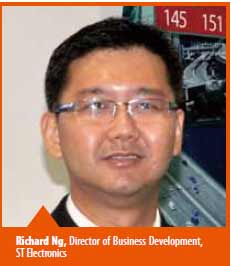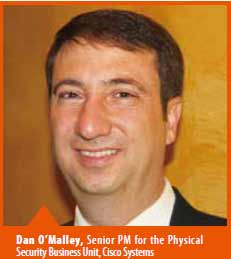Operators need to interact with traffic systems daily for management and enforcement, demanding accurate results. With roads crossing jurisdictions, traffic solutions must conform to system requirements, regulations and policies for seamless interagency cooperation.
Operators need to interact with traffic systems daily for management and enforcement, demanding accurate results. With roads crossing jurisdictions, traffic solutions must conform to system requirements, regulations and policies for seamless interagency cooperation.
The task of monitoring traffic usually spans multiple agencies, who share camera footage for disparate reasons. Highway operators want to manage congestion and clear accidents. Law enforcement bodies want to catch violations, such as speeding or red-light running. Each entity requires different results from the same system, which must be sufficiently flexible. In some cases, each agency maintains its own monitoring network, resulting in five cameras watching the same vehicle. While that example is extreme, it is sadly all too common.
 Aside from creating an eyesore, redundant systems are a waste of taxpayer money. “Control room operators are looking for solutions and systems that will help improve their operational efficiency and effectiveness,” said Richard Ng, Director of Business Development, ST Electronics. “Solutions that provide a high level of asset visibility and situational awareness will contribute to these goals which, in turn, will drive the timeliness and adequacy of the response in the event of incidents.”
Aside from creating an eyesore, redundant systems are a waste of taxpayer money. “Control room operators are looking for solutions and systems that will help improve their operational efficiency and effectiveness,” said Richard Ng, Director of Business Development, ST Electronics. “Solutions that provide a high level of asset visibility and situational awareness will contribute to these goals which, in turn, will drive the timeliness and adequacy of the response in the event of incidents.”
Efficiency is a top priority for traffic managers, as they cannot afford a pair of eyes on every part of the network. “The ability to recognize and respond to events is the main objective,” said Mark Cartwright, Technical Secretary of the Urban Traffic Management and Control.
Part of efficiency is ease of use, making management's life simpler by resolving problems, said Rui Ma, Director of Intelligent Transportation, Hikvision Digital Technology. 
Reliability and uptime are other management priorities. “Reliability is the recognition of the license plate and the correct reading of the license plate, such as not mistaking a V for a Y,” said Koen Hobbelink, Business Development Manager of the Netherlands for Nedap. “Other operational demands are uptime within a certain time frame and lifetime of the product.”
DETANGLING TRAFFIC
 Relieving congestion is the main goal of traffic monitoring. Therefore, gathering information on road conditions is the first step, then sending that data to the management center for flow analysis and taking an appropriate response, said Martin Yang, Director of R&D for Sunell Technology. This can include electronic signage for drivers, providing real-time traffic updates.
Relieving congestion is the main goal of traffic monitoring. Therefore, gathering information on road conditions is the first step, then sending that data to the management center for flow analysis and taking an appropriate response, said Martin Yang, Director of R&D for Sunell Technology. This can include electronic signage for drivers, providing real-time traffic updates.
A good traffic-monitoring and management system can inform drivers about road conditions ahead, enabling them to avoid traffic jams when accidents and incidents occur, said Nafis Jasmani, Sales Manager for ASEAN at Axis Communications. “The enforcement bodies can also use the system to further enhance their response actions to critical situations as well as dangerous motorists.”
 In some applications, traffic flow is the top priority rather than catching red-light violations. “If operators want to count how many cars went left on Tuesday from 2 to 5 p.m., they can set it up to count traffic patterns,” said Dan O'Malley, Senior PM for Cisco Systems. “They can use video as business and surveillance tools. Some areas in the U.S. don't even want to record; they just want to count objects that go left and right.”
In some applications, traffic flow is the top priority rather than catching red-light violations. “If operators want to count how many cars went left on Tuesday from 2 to 5 p.m., they can set it up to count traffic patterns,” said Dan O'Malley, Senior PM for Cisco Systems. “They can use video as business and surveillance tools. Some areas in the U.S. don't even want to record; they just want to count objects that go left and right.” 
While some traffic monitoring is done automatically, such as LPR for identification, it still requires human interaction. “The camera is just to see the traffic and check if there's a traffic jam,” said Zaheer Ali, Director of Oriole Electronics. “Operators can see if there's an accident and send help.”
MULTIPLE AGENCIES
Traffic solutions rarely fall under the jurisdiction of one single agency, requiring interagency communication. This is challenging when agencies want to link to systems from other authorities. For highways that pass through different states or municipalities, each entity may view feeds from its neighbors.
“I have less control over cameras from an external stream than I do from my own cameras,” Cartwright said. “The issue is twofold. One, can I receive the image stream effectively? With network camera technology, you stream to an open standard, such as MPEG-4, so that's not a problem.” A second issue is the control channel. “It's challenging to integrate cameras into a management system, no matter what manufacturer it's from,” Cartwright said. “To change, say, the resolution, those issues will clearly come into the control channel difficulties.”
Despite the difficulties, there are more integrated approaches to traffic management and monitoring. “Take several of the tristate areas in the U.S.,” said Vinodh Swaminathan, Director of Intelligent Transportation, IBM. “New York City's traffic problems are not only caused by New York City roadways. There is a dependence on New Jersey and Connecticut; it requires a much more integrated approach.”